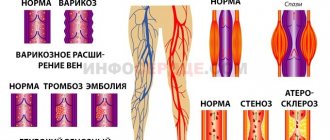A tumor called in medicine as cerebral hygroma - a benign formation that develops at the osteochondral joints. There is fluid inside this tumor.
The formation occurs in fairly rare cases and is painless if its location is on the knees, wrists, elbows or feet. Brain hygroma is a more dangerous type of tumor.
As it develops and increases in size, it can affect certain parts of the brain, which leads to dysfunctional disorders of healthy functioning.
The symptoms of hygroma are similar to other types of brain tumors (for example, a brain cyst). It is extremely important to undergo diagnostics and visit a specialist to prescribe further therapy.
Description of the disease
With subdural hygroma of the brain, cerebrospinal fluid (CSF) locally accumulates in the subdural space. The formations are located in a capsule with walls made of connective tissue and can be single-chamber or multi-chamber.
For information: the subdural space is located between the dura and arachnoid membranes of the brain, has the appearance of a gap filled with a small amount of cerebrospinal fluid, and is penetrated by numerous bundles of connective tissue fibers.
Subdural hygroma occurs for various reasons and tends to increase, which provokes dysfunctional disorders in the brain. Initially, the amount of cerebrospinal fluid inside the tumor is no more than 50 ml. As the disease develops, it increases to 100 and can reach 250 ml, depending on the cause of formation and the timeliness of therapy.
With hemorrhages, the transformation of a hygroma into a subdural hematoma is possible; the reverse process is not excluded.
What are the characteristics of individual types of hygroma?
The most common localizations of hygroma:
- wrist joint;
- brush;
- ankle joint;
- foot;
- knee-joint;
- shoulder joint.
Hygroma of the wrist joint
The formation in most cases is located on the dorsal (posterior) or posterolateral surface of the wrist, it is clearly visible under thin and displaceable skin, rarely reaches large sizes, and more often has the appearance of a large pea. When localized on the inner (front) surface, the hygroma is located closer to the thumb. Anxiety and pain occur during physical activity (work, sports).
Hygroma of the dorsal surface of the wrist joint. This is the most common, favorite location for this tumor.
Hygroma of the hand
Formations on the hand, as a rule, do not reach large sizes, and are also more often located on its dorsal surface. They are usually painless, unlike hygromas growing on the palmar surface. Pain occurs when grasping an object with the hand, while squeezing the hand. When the passing nerve fibers are compressed, the pain can be quite intense.
Hygroma in the area of the interphalangeal joint of the fingers
Hygroma of the ankle joint
Frequently occurring localization, location predominantly on the dorsal or lateral surfaces of the joint. Characterized by pain when walking for a long time, staying on your feet for a long time; At the same time, the tumor also increases. Problems arise with wearing shoes, rubbing in the protrusion area, and roughening of the skin.
Hygroma in the ankle joint causes problems with choosing shoes
Hygroma of the foot
On the foot, hygromas often form on its upper, extensor surface. Anxiety occurs while wearing shoes. The location of Becker cysts on the plantar side of the foot is much less common; they are associated not with joints, but with tendons. But due to compression of passing nerve fibers during walking and axial load on the foot, pain occurs.
Hygroma located on the dorsum of the foot
Hygroma of the knee joint
In the area of the knee joint, hygromas are formed mainly in the area of the popliteal fossa, and they are formed from inversions of the articular capsule. This is a rare localization of the formation, and it is usually painful due to compression of the branches of the nerves passing here . Its other name is ganglion. The cause of encystation and degeneration of the capsule area may be adhesions that develop after injury or inflammation of the joint.
A hygroma in the popliteal fossa is also called a ganglion
Hygroma of the shoulder joint
The most vulnerable area for the formation of hygroma in the area of the shoulder joint is its upper-outer part, where the articular capsule is located more superficially. More often, cysts occur after heavy physical work, as well as in professional athletes (wrestlers, swimmers, tennis players, throwers, when the shoulder joint is subjected to excessive load).
Hygroma in the shoulder joint often occurs in professional athletes
Causes of subdural hygroma
Depending on the cause, the disease is divided into several types.
The occurrence of a traumatic tumor is associated with mechanical injuries to the head, even minor bruises and blows, which damage the arachnoid membrane and rupture the basal cisterns. Brain hygroma of this type is diagnosed in 5–20% of cases with closed craniocerebral injuries. It can occur at any age, but is more often observed in older people, as well as in people susceptible to cerebral atrophy.
The cause of non-traumatic (spontaneous) neoplasms is the spontaneous or traumatic rupture of arachnoid cysts - benign formations filled with cerebrospinal fluid. More often, arachnoid cysts are a congenital pathology, so their damage is mostly observed in childhood or young age.
Folk remedies for hygroma
Hygroma can also be treated at home. Most often, patients use a copper coin for this, which is applied to the formation and tied tightly. As a rule, the capsule dissolves after a few days.
Treatment of hygroma with folk remedies includes:
- Physalis plant for hygroma. Physalis fruits are crushed in a meat grinder and the resulting composition is applied to the sore spot. On top of it is cotton fabric, cellophane on top. All this is fixed with a bandage. Keep this compress until the morning. In the evening, the procedure is repeated - the hygroma is first washed with warm water and soap, and then a compress is applied. After two weeks, the disease passes, and a small mark appears at the site of the hygroma, which will soon disappear completely.
- Compress. Compresses made from sea salt solution have proven themselves well in the treatment of synovial cysts. You should take half a liter of hot water and dissolve salt in it (at least 100 grams). Before going to bed, moisten gauze in this solution and thoroughly wipe the affected area. A clean 100% wool cloth and paper for compresses are placed on top. Everything is tightly fixed with a bandage. Such compresses should be done within a week. After a three-day break, treatment is resumed.
- Pine decoction. Young pine branches must be filled with warm water and boiled for 20 minutes. Then you need to knead the dough using flour, water, yeast and soda, make a flat cake out of it and bake in the oven. After covering the tumor with a bandage, you need to pour hot (but not boiling water!) broth on it until it runs out. Next, you need to remove the bandage, cut the cake and place it on the bump with the crumb. It is best to carry out this procedure at night.
- Red clay. Mix three tablespoons of red clay and one and a half tablespoons of warm salt water. Add a little more water if necessary, but the result should be a very thick, homogeneous mass. Spread it on the hygroma, place a piece of polyethylene on top, and secure it with a bandage. This compress can be kept for up to twelve hours at a time. Do it for one to two weeks, and the result will not take long to arrive.
- Wormwood is also an effective natural remedy for hygroma. Fresh stems of the plant are crushed to a mushy form. The mass is spread on thick cloth or paper for compresses and applied to the growth. Leave on the sore spot, as in the previous recipe.
- Hot paraffin. It has been proven that exposure to heat can have a positive effect on the process of tumor resorption. The paraffin is melted using a steam bath and quickly applied to the sore spot with a brush, covered with cellophane and wrapped in a warm cloth to conserve heat.
- Cabbage leaf compress. The cabbage leaf is lightly kneaded, smeared with honey, applied to the hygroma, and fixed with an elastic bandage. You need to keep the compress for a long time - in total, at least eight hours a day, replacing cabbage leaves once every two hours.
- Mix bee honey, rye flour and the fleshy part of aloe in equal proportions until a paste-like consistency is obtained. This cake should be applied to the affected area overnight, covered with cling film.
Before using any folk remedies, consult your doctor.
Symptoms of cerebral hygroma
When small in size, subdural hygroma does not manifest itself in any way and is discovered by chance during examinations.
As the size of the hygroma increases, certain symptoms appear.
Increased intracranial pressure and impaired outflow of cerebrospinal fluid during tumor formation leads to general cerebral symptoms:
- disorder of consciousness in the form of stupor, deafness, coma, impaired sensitivity, delayed response to stimuli, breathing or heart rhythm disturbances;
- mental disorders expressed by a rapid change from apathy, drowsiness, indifference to excitement and euphoria. Volumetric formations in the back of the head or temples can lead to visual or auditory hallucinations;
- headaches, dizziness;
- nausea, vomiting;
- convulsions;
- autonomic disorders: increased sweating, heart pain, tremors, shortness of breath, etc.
Dislocation syndrome is characterized by manifestations that occur under the mechanical influence of a tumor on certain brain structures. Depending on the location of the fluid, symptoms of nervous activity disorders can vary significantly.
When the occipital lobe of the brain, which is responsible for visual acuity and perception, is damaged, the patient’s vision is impaired, including peripheral vision, and perception is impaired. It is possible that visual elementary hallucinations may appear in the form of sudden flashes of light.
Pathological processes in the temporal lobes lead to impairment of hearing, working memory and understanding of sound information, auditory hallucinations, and sudden déjà vu.
If subdural formations appear in the parietal lobe, the patient’s general sensitivity, often tactile, is impaired. Astereognosis occurs - the ability to recognize familiar objects by touch by touch is lost and the perception of one’s own body is disrupted. Orientation in space is lost.
The frontal lobes form the morphological basis of human mental functions and his mind.
If a person has a tumor in them:
- muscle tone increases;
- epilepsy attacks occur;
- mental state is disturbed;
- the mood constantly changes;
- there is a disorder of coordination of movements, mainly when standing or while walking;
- involuntary movements occur.
Why does hygroma appear?
reading information
It has been established that young women are most often affected. Doctors believe that the reason for the development of hygroma in women is a looser tissue structure. There is also a hereditary, constitutional predisposition. Against this background, even minor injuries or inflammatory processes in the joints and tendons can lead to the formation of hygroma.
Long-term systematic stress on joints and tendons is also of great importance, for example, when doing certain work with your hands, when wearing high-heeled shoes for a long time, or when frequently turning the foot.
Wearing high-heeled shoes contributes to the formation of hygroma of the ankle joint
We also recommend studying the topic of this material:
Causes of development of cervical hygroma of the fetus and methods of elimination
Fetal neck hygroma is a dangerous disease, but it can be combated. Current treatment methods can eliminate the disease in the early stages of pregnancy. Main -…
Readers often study along with this material:
- Temporomandibular joint pain: how to quickly get rid of pain?
- Synovioma symptoms, causes, treatment methods
Diagnosis of subdural hygroma
At the first visit to a neurologist, the patient reports his complaints, and the possible cause of the disease is determined. In the future, it is recommended to undergo examinations using modern methods.
Despite the frequent use of x-ray examination, it is a low-informative method, because primarily aimed at assessing the condition of the skull bones rather than tissue. In any case, x-rays reveal the very fact of the presence of hygroma, as well as head trauma.
Magnetic resonance imaging creates a detailed three-dimensional image of brain structures. The study allows not only to determine the exact location and size of the tumor, but also to recognize it at the very beginning of its appearance.
Computed tomography uses x-ray equipment and computer software. The method is less sensitive compared to MRI, but is used to identify pathological formations, their localization, assess the effectiveness of treatment and determine relapses.
Cerebrospinal fluid testing is done through a spinal tap to look for proteins and blood.
How does hygroma manifest?
Hygroma is a subcutaneous formation of a round or oval shape with a diameter of 0.5 to 2-3 cm, but sometimes it can reach large sizes - up to 4-8 cm. To the touch, the hygroma is dense, limited in displacement. With its small size and significant mobility, it can “hide” for a while, go into the joint area or under the tendon during movements and pressure, then reappear. At the same time, the impression of recovery is temporarily created, as if the tumor has resolved, but this is not the case.
The favorite location of the Becker cyst is the dorsal (outer) surface of the wrist joint, hand, second place is occupied by the ankle joint, then the knee and elbow. Hygroma on the inside of the joints is much less common.
Hygroma on the inner surface of the wrist - a rare localization of the cyst
Pain with hygroma is not typical, except in cases where the tumor reaches a large size, compresses nerve fibers or is injured during work, movement, as well as clothing and shoes. It is mainly a cosmetic defect, especially in women, disrupting the aesthetic appearance of the wrist, ankles, and feet.
A characteristic feature of hygromas is their ability to grow . They increase with physical activity, decrease at rest, but in general they grow gradually and slowly. The skin stretching over the tumor may become inflamed, thicken, and become darker in color.
Important: if you find such a formation in yourself, you should definitely consult a doctor for examination and clarification of the diagnosis.
The editor has found two more interesting materials for you:
- Hip dysplasia in newborns – why does it appear and why is it dangerous?
- Causes of wrist hygroma and methods of eliminating pathology without surgery
Treatment of subdural hygroma and prognosis
If there is no tendency to grow, surgical intervention to remove the tumor is not required. The patient requires a systematic examination for timely detection of the development of pathology. It is possible to prescribe symptomatic therapy (analgesics for headaches caused by increased intracranial pressure, etc.).
In case of significant volumes, the hygroma is eliminated by a neurosurgeon by drainage using a thin catheter passed through a burr hole in the skull, which is removed after several days.
The prognosis after surgery is influenced by numerous factors - concomitant injuries due to injuries, the nature of pathological changes in the brain that arose under the influence of the tumor, and others. If there are no unfavorable circumstances, the patient’s recovery and restoration of normal brain activity after the operation are observed in almost every case.
Recurrence of cerebral hygroma cannot be ruled out. Therefore, after treatment, the patient must carefully monitor his health.
Treatment methods
There are two types of treatment for subdural hygroma of the brain - conservative and surgical. First of all, doctors strive to cure the tumor without surgery. If the tumor is small and does not cause the patient any discomfort, then a wait-and-see approach is chosen. As the pathology progresses, medications are prescribed to stabilize the condition.
Large thickenings, in which the patient suffers from frequent migraines, impaired visual function and other unpleasant symptoms, require removal. Surgical intervention is complex, so it is prescribed only in the absence of contraindications.
Before surgery, general anesthesia is used. Then the doctor makes a hole in the skull - in the area where the hygroma is localized. A drainage device is installed inside through it. With its help, accumulated liquid is pumped out of the cavity. The drainage can be removed only after a couple of days. This depends on the size of the capsule and additional features.
The postoperative period takes at least a week. All this time the patient is in the hospital, under medical supervision. Surgery does not guarantee that the tumor will not make itself felt again. There is a high risk of re-accumulation of contents in the meninges. Therefore, the operation is sometimes prescribed not once, but several times.
If persistent relapses occur, it may be necessary to install a shunt to drain fluid from the brain.
What complications can the disease cause?
If the first symptoms of the disease are detected, treatment is recommended so that it does not cause complications. Most often, a compress helps in this case.
- If an arm, palm or leg is injured at the site of formation, fluid from the hygroma begins to flow out of the resulting wound. At the same time, the flow of hygroma contents does not stop for a long time.
- Sometimes, if the site of formation is injured, the accumulated fluid may not come out, since the synovial membrane does not open. In this case, fluid can be forced into the joint cavity.
- Also, the membrane of the hygroma can rupture, causing its contents to leak into the surrounding tissue.
- After the hygroma is crushed, the membrane is gradually restored and becomes airtight. As a result, liquid accumulates again in the hygroma. Thus, at the site of its crushing, several hygromas can form at once.
- In the area of injury to the hygroma, an inflammatory process may develop. In case of infection, suppuration may form at the site of the lesion.
When a hygroma spontaneously opens or opens as a result of external traumatic influence, a prolonged flow of the hygroma’s contents through the resulting hole is observed.
Hygroma of the shoulder joint
Hygroma of the forearm is rare, but is the most unpleasant neoplasm in terms of its symptoms and degree of danger. Compression of the nerves and tissues close to the joints during the growth of the cyst provokes not only pain and swelling of the tissues, but is also fraught with compression of large arteries. As the tumor grows, the patient has to experience constant pain from habitual movements. Sometimes a cyst in the forearm is accompanied by swelling, which spreads to the shoulder and neck area. In this area, a cyst appears due to a systematic negative effect on the joint.
Hygroma of the shoulder is quite rare











